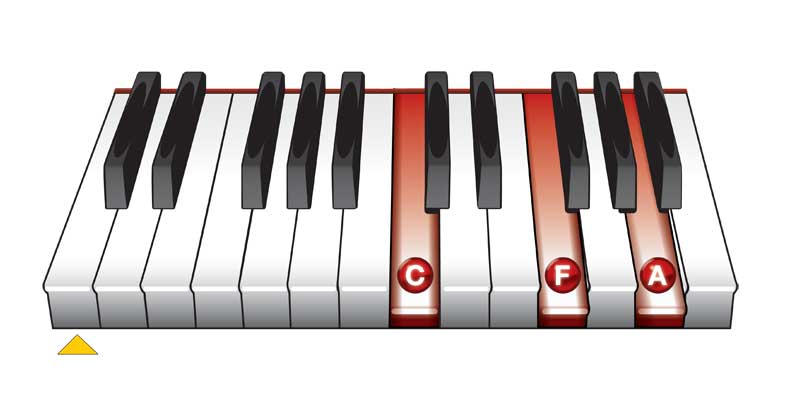
Chord Inversions
So far you have learned the C, F and G major chords. Because the lowest note in each of these three chords is the root note, the shape given is called the root position.
All major chords contain three different notes. These notes can be duplicated and/or played in a different shape. When the third (3) is the lowest note of the chord shape, the chord is said to be the first inversion. The following diagram illustrates the first inversion of the C major chord, which contains the notes E (3), G (5), and C (1) in that order.


Do not confuse the fingering numbers on the chord diagrams with the interval numbers of the chord.
When the fifth (5) is the lowest note of the chord shape, the chord is said to be the second inversion. The following diagram illustrates the second inversion of the C major chord, which contains the notes G (5), C (1), and E (3) in that order.


C Major Chord Inversions
The following example uses root position, first inversion, second inversion, and an octave of the root position of the C chord in the right hand part. Use the correct fingering as shown on the diagrams.

G Major Chord Inversions
These three diagrams illustrate the root position (1 3 5), first inversion (3 5 1), and second inversion (5 1 3) of the G chord.
G (Root Position)


G (1st Inversion)


G (2nd Inversion)


The next example uses the root position, first inversion, second inversion, and an octave of the root position of the G chord. Use the correct fingering as shown in the diagrams.

F Major Chord Inversions
These three diagrams illustrate the root position (1 3 5), first inversion (3 5 1), and second inversion (5 1 3) of the F chord.
F (Root Position)


F (1st Inversion)


F (2nd Inversion)


The next example uses the root position, first inversion, second inversion, and an octave of the root position of the F chord.

Here are some of the ways inversions can be used in Blues. The following example contains all three positions of a C major chord played over a shuffle rhythm.

One of the reasons inversions are so useful is that they enable you to find chord shapes which are close together on the keyboard. Here the C chord appears in root position, the F chord is in second inversion and the G chord is in first inversion. The left hand plays the root note of each chord.

This example applies these inversions to the 12 Bar Blues progression. Notice how effective the use of a simple repeated rhythm can be.




